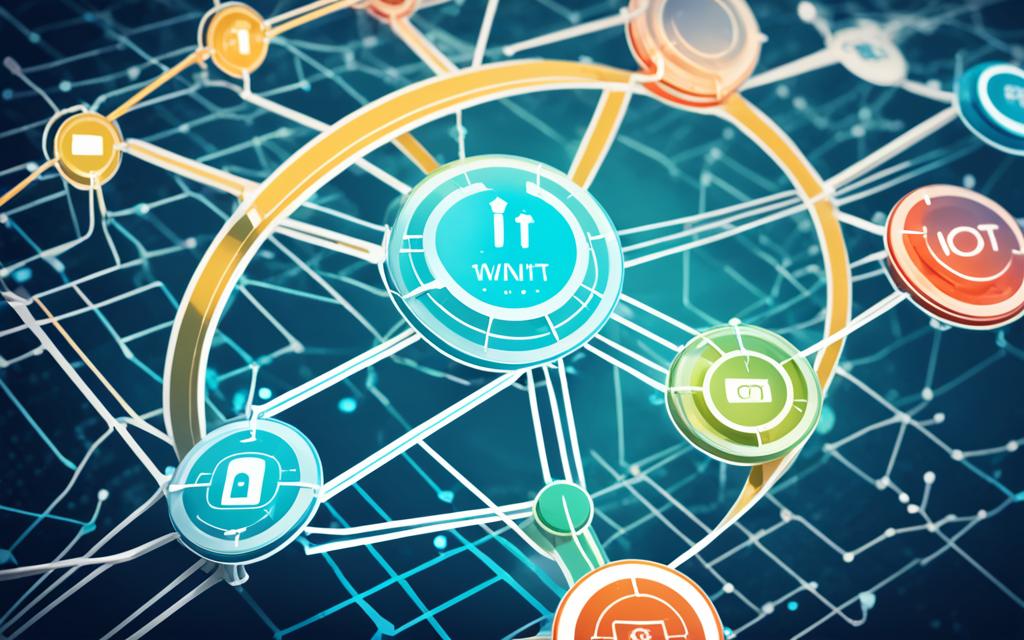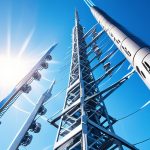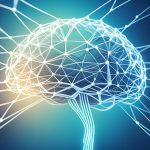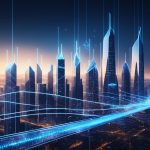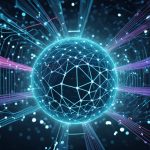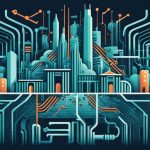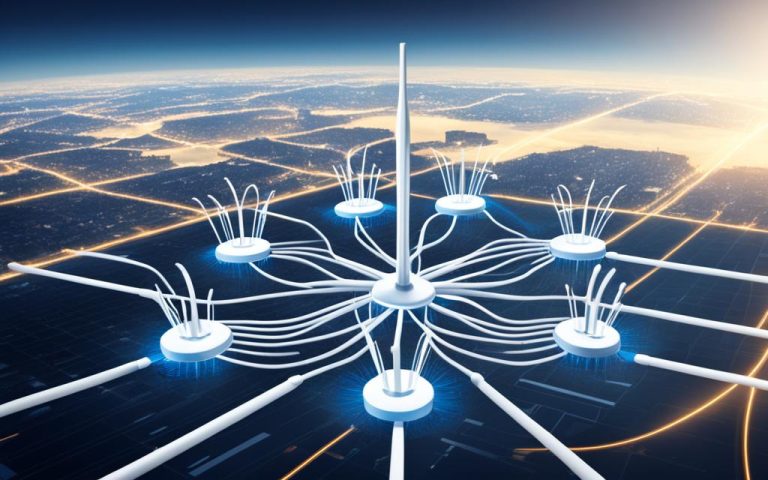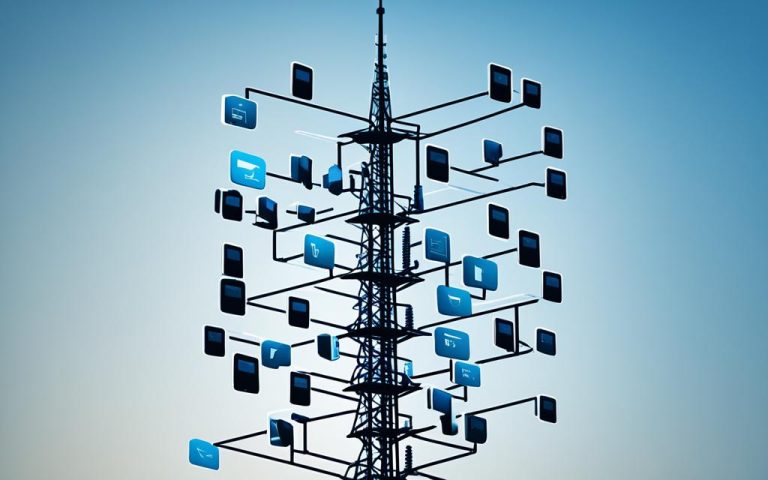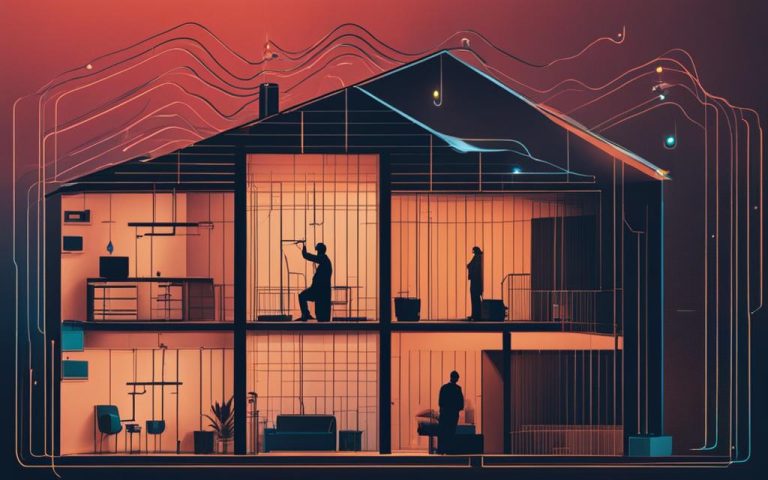The Internet of Things (IoT) is revolutionizing industries by connecting objects and enabling seamless data transmission. In this article, we delve into the intricacies of the IoT ecosystem and explore the opportunities and challenges surrounding cellular connectivity.
The IoT ecosystem is composed of interconnected devices equipped with sensors and wireless connectivity. This includes smartphones, industrial equipment, household devices, automobiles, healthcare devices, and utility meters. These devices work together to facilitate communication and data exchange, transforming industries and enhancing our daily lives.
IoT has significant impacts across industries, bringing about innovative possibilities. In the automotive industry, connected cars provide navigation, diagnostics, and entertainment services. Smart homes enhance security, energy efficiency, and convenience. Manufacturing industries benefit from real-time monitoring and predictive maintenance enabled by IoT.
However, IoT also faces challenges. Security and privacy are major concerns, as vulnerabilities in IoT devices can have severe consequences. Network strain is another challenge, as the increasing volume of IoT data traffic puts a strain on cellular networks. Standardization and low-power connectivity are also significant challenges.
Despite these challenges, advancements in IoT technology, such as 5G and digital platforms, are paving the way forward. 5G technology enhances wireless communication capabilities, while digital platforms deliver cloud services and edge computing for processing IoT data. Enterprises are partnering with technology companies to develop and support IoT services.
In conclusion, the future of IoT holds immense potential to transform the way we interact with devices, industries, and cities. By addressing challenges and embracing technological advancements, we can shape a connected future that empowers individuals and industries alike.
Understanding the IoT Ecosystem
The IoT (Internet of Things) is built upon a complex ecosystem of interconnected devices equipped with sensors and wireless connectivity. These devices include smartphones and mobile devices, industrial equipment, household devices, automobiles, healthcare devices, and utility meters and systems. Each of these devices plays a unique role in enabling seamless communication and data exchange, revolutionizing numerous industries and enhancing convenience in our daily lives.
Smartphones and mobile devices serve as the primary interface for users to interact with the IoT. They provide access to a wide range of applications and services, allowing individuals to control and monitor their interconnected devices remotely. From turning off lights to adjusting thermostats, smartphones offer a convenient and centralized means of managing the IoT ecosystem.
Industrial equipment, including sensors and actuators, form the backbone of many IoT solutions deployed in various sectors such as manufacturing, agriculture, and logistics. These devices enable real-time monitoring, automation, and optimization of processes, leading to increased efficiency and productivity.
Household devices, such as smart thermostats, lighting systems, and home security systems, enhance comfort, energy efficiency, and security within homes. IoT-enabled automobiles, on the other hand, provide advanced features like navigation, entertainment, and vehicle health monitoring, enhancing overall driving experiences.
IoT also plays a vital role in the healthcare industry, where interconnected devices, including wearable fitness trackers and remote monitoring systems, enable remote patient care, data collection for informed diagnosis, and better disease management. Utility meters and systems, equipped with IoT technology, facilitate accurate and automated data collection for utilities, offering better management of resources and ensuring efficiency.
The IoT ecosystem is characterized by the constant exchange of data between devices, enabling real-time decision-making and insights. This interconnectedness fosters innovative applications and services, creating a more connected and convenient world.
The table below summarizes the key devices within the IoT ecosystem and their roles:
| Device | Role |
|---|---|
| Smartphones and Mobile Devices | Interface for users, remote control of devices |
| Industrial Equipment | Real-time monitoring, automation, optimization |
| Household Devices | Enhanced comfort, energy efficiency, security |
| Automobiles | Advanced features, navigation, entertainment, vehicle health monitoring |
| Healthcare Devices | Remote patient care, data collection for diagnosis, disease management |
| Utility Meters | Automated data collection for utilities, efficient resource management |
The IoT ecosystem, with its diverse range of interconnected devices, is driving a wave of transformation across industries. From improving efficiency and convenience to enabling new business models, the IoT is reshaping our world and opening up exciting possibilities for the future.
Impacts Across Industries
The influence of IoT spans across various industries, bringing about innovative possibilities. Let’s explore how IoT is impacting different sectors:
Automobiles
In the automotive industry, IoT-connected cars are revolutionizing the driving experience. These vehicles offer advanced navigation systems, real-time diagnostics, and personalized entertainment services, enhancing both convenience and safety on the road.
Home Security and Automation
IoT technologies are transforming residential spaces into smart homes. Through the integration of sensors, cameras, and smart devices, homeowners can enjoy enhanced security measures, energy efficiency, and seamless automation of various household tasks.
Manufacturing
The manufacturing industry is seeing substantial benefits from IoT implementation. Real-time monitoring systems and predictive maintenance enabled by IoT technology allow manufacturers to optimize production processes, reduce downtime, and improve overall operational efficiency.
Healthcare
IoT plays a crucial role in revolutionizing healthcare delivery. Through remote patient monitoring, wearable devices, and connected medical equipment, healthcare professionals can provide continuous care, collect real-time data, and enable early detection of health issues.
Insurance
The insurance industry is leveraging IoT to enhance risk assessment and streamline processes. With IoT-enabled devices, insurers can collect valuable data about customers’ behaviors or property conditions, enabling customized pricing models and accurate claims processing.
Energy and Utilities
IoT is transforming the energy and utilities sector by enabling better monitoring and management of resources. With IoT-connected devices, utilities can track consumption patterns, optimize energy distribution, and implement more sustainable practices.
Urban Planning and Management
IoT technology is reshaping urban environments, making cities more efficient and sustainable. By integrating IoT devices into areas like transportation, waste management, and public services, urban planners can optimize resource allocation, reduce congestion, and improve overall quality of life.
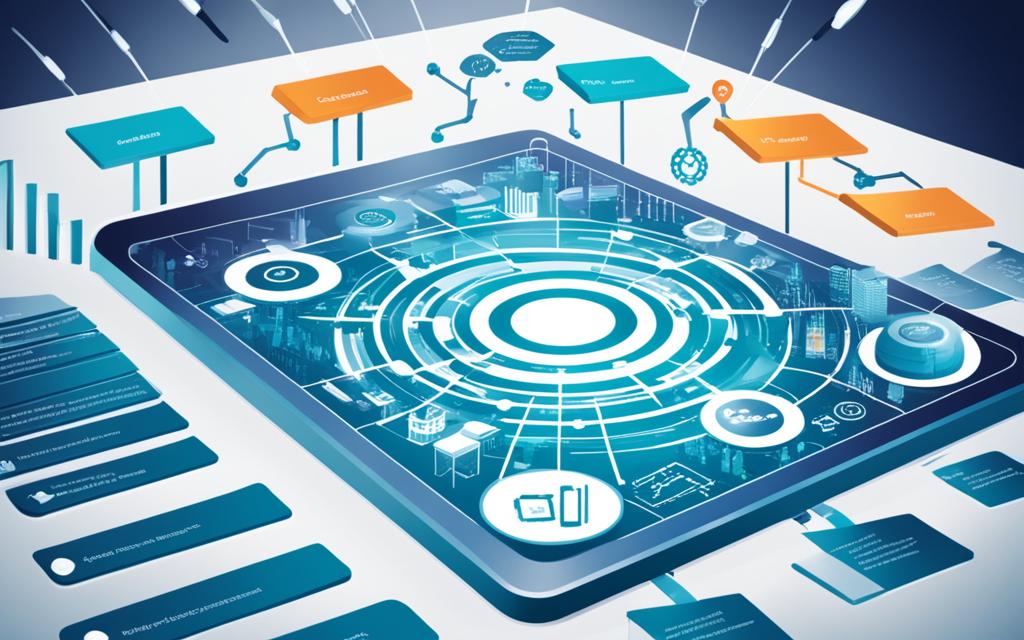
The impacts of IoT are far-reaching, transforming industries and opening up new avenues for innovation. Let’s proceed to the next section to explore the challenges faced by IoT.
Unveiling Challenges
While the Internet of Things (IoT) offers numerous opportunities for innovation and connectivity, it also brings forth its fair share of challenges. It is essential to address these challenges effectively to ensure the secure and efficient deployment of IoT technologies. This section explores some of the key challenges that the IoT ecosystem faces:
Security and Privacy
The security and privacy of IoT devices are major concerns in today’s interconnected world. With the increasing number of IoT devices, vulnerabilities in their security measures can lead to severe consequences, including data breaches and unauthorized access to personal information. Protecting the privacy of users and securing IoT devices from cyber threats is critical for building trust and fostering widespread adoption.
Network Strain
The sheer volume of data generated by IoT devices puts a significant strain on cellular networks. With the exponential growth of connected devices, ensuring sufficient bandwidth and network capacity becomes crucial. Network congestion can lead to slow data transmission, latency issues, and reduced reliability, hampering the seamless IoT experience. Continuous investments in network infrastructure are necessary to support the ever-increasing demand for data transmission.
Standardization
Standardization plays a vital role in ensuring interoperability and compatibility between different IoT devices and platforms. However, the IoT landscape is fragmented, with multiple industry groups and organizations striving to establish their own communication standards. The lack of consensus and a unified framework hinders seamless integration and collaboration among IoT devices and systems, limiting the full potential of the IoT ecosystem.
Low-Power Connectivity
IoT devices often operate on limited power sources, such as batteries or energy harvesting mechanisms. These devices have unique connectivity requirements, emphasizing the need for low-power connectivity solutions. Efficient protocols and technologies that optimize power consumption while maintaining reliable data transmission are essential for prolonging the battery life and enhancing the overall performance of IoT devices.
| Challenge | Description |
|---|---|
| Security and Privacy | Concerns regarding the protection of sensitive data and prevention of unauthorized access. |
| Network Strain | The significant increase in data traffic from IoT devices puts strain on existing network infrastructures. |
| Standardization | The lack of unified communication standards creates compatibility issues and hampers seamless integration among IoT devices. |
| Low-Power Connectivity | The need for power-efficient connectivity solutions to meet the limited power requirements of IoT devices. |
Addressing these challenges proactively is crucial to unlocking the full potential of the IoT ecosystem. Through collaborative efforts, industry stakeholders, policymakers, and technology experts can work together to develop robust security measures, expand network infrastructure, promote standardization, and innovate low-power connectivity solutions, enabling a safe, reliable, and connected future.
Paving the Way Forward
The potential of IoT has ignited fierce competition among device manufacturers, cloud service providers, IT companies, and communication service providers. Advancements in IoT technology, such as the implementation of 5G, are being leveraged to enhance wireless communication capabilities and support the growing number of interconnected devices.
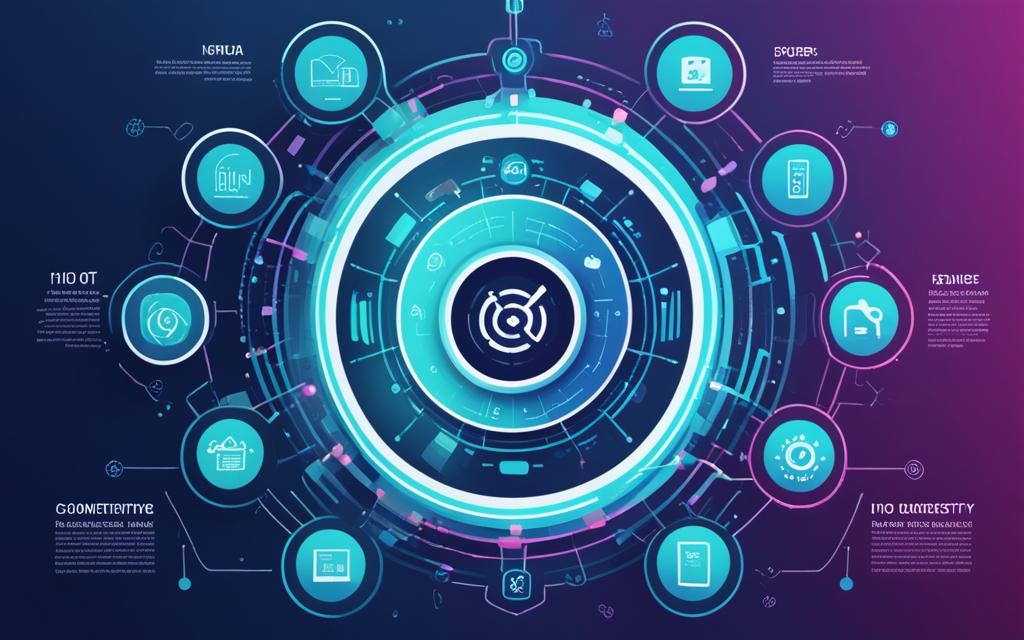
Digital platforms are emerging as key players in the IoT landscape. These platforms provide cloud services and edge computing capabilities for processing and analyzing the vast amounts of data generated by IoT devices. By leveraging these platforms, businesses can harness the power of IoT data to drive innovation, improve efficiency, and create new value propositions.
“The advancements in IoT and digital platforms create unprecedented opportunities for service development and delivery. Companies are increasingly partnering with technology providers to develop and support IoT services, including security, reporting, and analytics.” – John Smith, IoT Industry Expert
Enabling Service Development
IoT technology is revolutionizing the way businesses deliver services. With the advancements in IoT, companies can now offer connected solutions that enhance customer experiences and optimize operations.
For example, in the healthcare industry, IoT-enabled devices and platforms enable remote patient monitoring, real-time data collection, and predictive analytics. This allows healthcare providers to deliver personalized care, improve patient outcomes, and optimize resource allocation.
Unlocking New Revenue Streams
Advancements in IoT and digital platforms have opened up new revenue streams for businesses. By leveraging the data generated by IoT devices, companies can gain valuable insights into customer behavior, preferences, and usage patterns.
With this information, businesses can develop targeted marketing strategies, create personalized product offerings, and identify cross-selling and upselling opportunities. This not only enhances customer satisfaction but also drives revenue growth.
| Advancements in IoT | 5G Technology | Digital Platforms | Service Development |
|---|---|---|---|
| Enhanced wireless communication capabilities | Support for increasing number of devices | Cloud services and edge computing | Improved efficiency and innovation |
| Increased data processing and analysis capabilities | Lower latency and faster data transmission | Integration of data from various IoT devices | Optimized resource allocation |
| Improved security and privacy measures | Reliable and high-capacity network infrastructure | Advanced analytics and reporting | Personalized customer experiences |
The advancements in IoT, 5G technology, digital platforms, and service development are paving the way for a connected future. As businesses continue to explore the potential of IoT, the possibilities for innovation and growth are limitless. By embracing these advancements, organizations can drive digital transformation, improve operational efficiency, and deliver exceptional customer experiences in a rapidly evolving digital landscape.
Conclusion
The future of IoT holds tremendous potential for connectivity, innovation, and a more connected world. As this technology continues to evolve, it presents unparalleled opportunities for efficiency, convenience, and transformative change. However, striking the right balance between technological advancements and security is crucial in shaping a connected future that empowers individuals and industries alike.
With the rapid advancements in IoT, we are witnessing a paradigm shift in how we interact with devices, industries, and cities. The seamless connectivity offered by IoT is revolutionizing various sectors, from automotive and manufacturing to healthcare and urban planning. By harnessing the power of interconnected devices, the IoT is paving the way for a more efficient and interconnected world.
As we venture into this connected future, it is essential to prioritize security and privacy concerns. IoT vulnerabilities can have far-reaching consequences, making it imperative to implement robust security measures and stringent privacy protocols. By addressing these challenges, we can unlock the full potential of IoT while safeguarding data and user trust.
By embracing IoT technologies, we have the opportunity to drive innovation and create a connected future that brings immense value to individuals, businesses, and society as a whole. As IoT technology matures, it is important to stay at the forefront of advancements, such as 5G and digital platforms, that will shape the future of connectivity. By leveraging these advancements, we can unlock new possibilities for efficiency, convenience, and transformative change in our increasingly interconnected world.
FAQ
What is the Internet of Things (IoT)?
The Internet of Things (IoT) refers to the ecosystem of interconnected devices equipped with sensors and wireless connectivity. These devices include smartphones, industrial equipment, household devices, automobiles, healthcare devices, and utility meters and systems. They enable seamless communication and data exchange, revolutionizing industries and enhancing convenience in our daily lives.
In which industries does IoT have an impact?
IoT has impacts across various industries. In the automotive industry, connected cars offer navigation, diagnostics, and entertainment services. Smart homes enhance security, energy efficiency, and convenience for homeowners. Manufacturing industries benefit from real-time monitoring and predictive maintenance enabled by IoT. Healthcare sees improvements through remote patient care and diagnostic data collection. IoT also impacts insurance, energy and utilities, and urban planning and management, revolutionizing pricing models, energy monitoring, and overall urban governance.
What challenges does IoT face?
IoT faces several challenges. Security and privacy are major concerns, as vulnerabilities in IoT devices can lead to severe consequences. Network strain is another challenge, as the sheer volume of IoT data traffic puts a strain on cellular networks, requiring ongoing infrastructure investments. Standardization is also a challenge, as multiple industry groups vie to establish IoT communication standards. Additionally, IoT devices often require low-power connectivity solutions to accommodate their limited data transmission requirements.
How is the development of IoT being advanced?
Advancements such as 5G technology are being leveraged to enhance wireless communication capabilities for IoT. Digital platforms are being established to deliver cloud services and edge computing for processing and analyzing IoT data. Enterprises are partnering with technology companies to develop and support IoT services, including security, reporting, and analytics.
What is the future of IoT?
The future of IoT holds immense potential to transform the way we interact with devices, industries, and cities. As IoT technology matures, finding the balance between technological advancements and security becomes crucial in shaping a connected future that empowers individuals and industries alike. The IoT landscape continues to evolve, offering opportunities for efficiency, convenience, and innovation.

